- Homepage
- News and Features
- Returning Parkstone to its historic roots
Returning Parkstone to its historic roots
In January 2020 at BTME in Harrogate, the greens team at Parkstone was awarded the Championship Greenkeeping Performance of the Year Award in recognition of their outstanding work in hosting the Ladies European Amateur Championship the previous year. Laurence Pithie met up with Course Manager Grant Peters to learn more about what led to this achievement and to gain an insight into the working practices at this delightful top 100 course.
Parkstone in Poole, Dorset is almost within touching distance of Poole Harbour and around two miles from the exclusive Sandbanks area.
The course was founded in 1909 by Lord Wimborne, who owned the surrounding Canford Estate. Course architect Willie Park was appointed to design a new 5,700-yard course over an area of mainly undulating heath and scrub woodland, which cost £8,660 to build. A team of up to 300 labourers completed the work in just five months and it opened for play 11 months later under the stewardship of the first appointed greenkeeper, Charlie Hope.
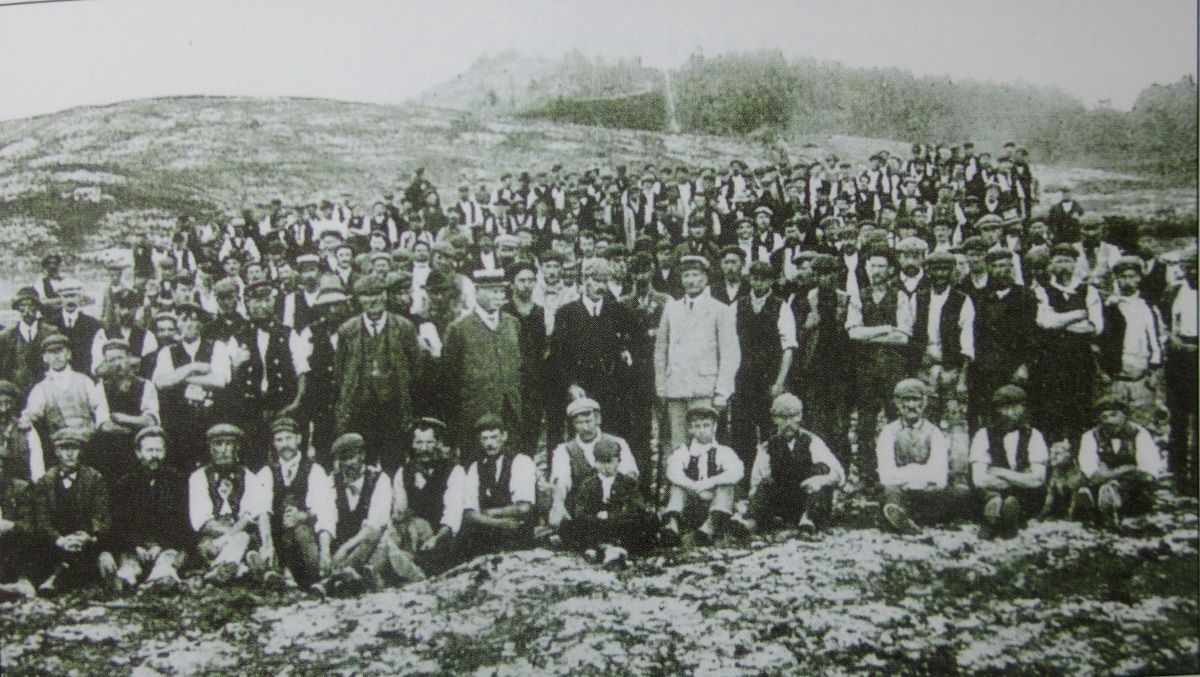
Further amendments to the course continued, but the main change to the layout was completed in 1935 by James Braid. He was tasked with re-designing the course, utilising additional land where holes 8 to 11 are located. The Braid layout remains largely the same today, although it has since been extended and is now close to 6,300 yards.
Over a century has passed since play began and the course currently consists of a mix of heath, woodland and wetland within a designated SSSI site, while regularly playing host to numerous national and regional championships. Like many golf courses built during the era of rapid golf development, Parkstone is now surrounded by properties of varying styles and sizes and enjoys a full membership and a healthy waiting list.
A change in direction
The view from the elevated position of the clubhouse is one that is both inviting and intriguing and gives you a taste of what lies beyond. I met with course manager Grant Peters who started by giving me a brief introduction, followed by an insight into the club’s key objectives and a quick re-cap of what work had taken place prior to his arrival.
Grant said: “I was appointed in December 2015, having held a similar role at Linlithgow in Scotland for five years. I guess my first realisation was that being nearly 500 miles further south, weather and subsequent conditions were different to what I had previously experienced! I would need to adapt to a different environment and that meant reviewing at least some of the greenkeeping practices I was used to, to determine what would work best at Parkstone.”
Towards the end of the last century, the course had largely become tree lined and with diminishing amounts of heather. Around that period and to halt this decline, the club embarked on a plan of significant tree removal, working under the auspices of Natural England stewardship. Around 2,000 trees were initially removed and since Grant’s appointment another 110 have been felled, with 35 or so more yet to be removed. This falls within an ecological plan that is supported by the STRI and Natural England and which ensures the site remains a SSSI.
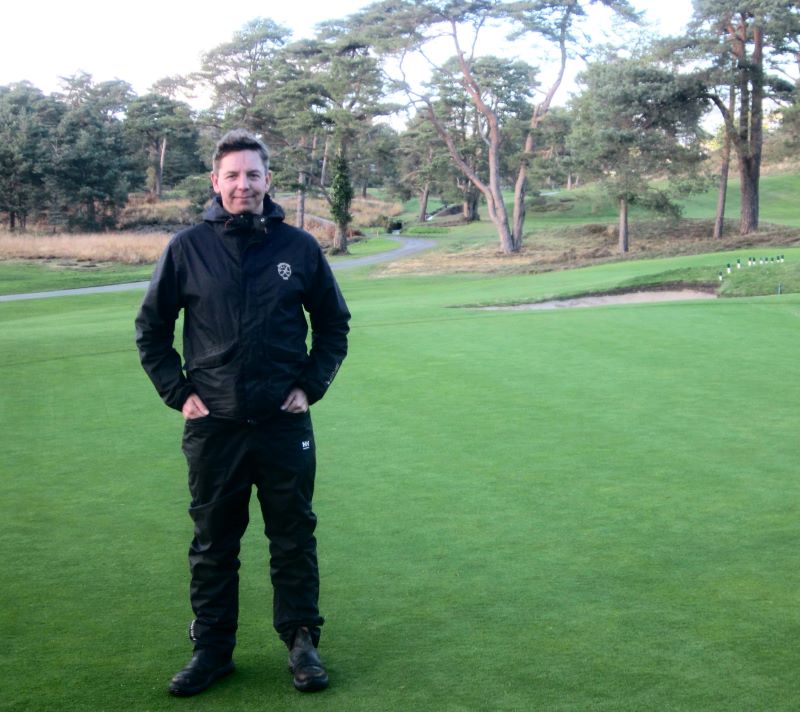
Following the success of tree removal and heather regeneration, course architect Martin Hawtree was appointed to carry out a full course audit in 2013 and produce a masterplan of course development for the club to implement. This required a substantial investment and a more extensive work programme, started by Grant’s predecessor, Steve Richardson.
The initial priority was to focus on the basic agronomics to the main playing areas of the course, which were now receiving greater levels of sunlight and air movement. A Toro Lynx irrigation system was installed, including additional water storage and double row fairway sprinkler heads, as well as coverage to run-off areas and swales around the greens.
Further investment in machinery and to the compound infrastructure set the wheels in motion. Great strides were made on improving the performance of the putting surfaces, along with tees, approaches and fairways, while all 36 bunkers were rebuilt. Substantial areas of overgrown scrub were removed in addition to completing some smaller projects within a four-year period prior to Grant’s appointment.
Policy and diversity
Listening to the changes that had taken place previously, I was interested to learn what Grant’s remit was, where his priorities lay and if there needed to be any changes within the framework of the club’s policy and objectives.
Grant explained: “My remit was to continue with the current turf management plan throughout the course and to focus on the issue of playability, namely drainage.”
The Parkstone soil is acidic, with a pH of between 5.3 and 5.6, varying across the course, and ranges from sand and gravel to a peaty sand above the areas of wetland habitat. Here a drainage ditch traverses the length of the course enroute to the sea.
“Low lying areas adjacent to this ditch can be affected during periods of intense rainfall and it’s these areas where drainage work was prioritised,” said Grant.
There was also the problem of organic matter accumulation on the fairways to alleviate.
Grant added: “The thin covering of soil on many high wear areas had led to erosion and loss of grass cover and these also had to be addressed, as well as improving the network of paths by greens and tees. Non-course issues such as invasive scrub and gorse are more of an on-going issue that, if not controlled, would negatively impact areas of regenerating heather.
“Staffing levels and equipment requirements needed to match these objectives, while we agreed work programmes and timescales with the club to minimise disruption to play.”
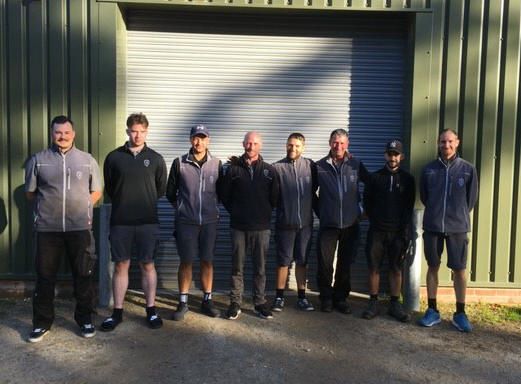
Implementation
I asked Grant to detail some of the key work programmes he has implemented since 2016. Starting with fairway drainage, to date the team has installed approximately 2,500 linear metres of mainly 80mm pipe on around 1.5ha of fairways. This work has primarily been on the 1st, 3rd, 8th and 9th holes, which are low lying, and was completed by Pro-Fusion at 4-metre spacings. This has enabled them to keep the course open for play for as long as possible by quickly removing excess water from fairways that were prone to flooding or holding water.
The team also implemented a soil exchange programme that included coring, deep tining and sand dressing to lower the organic matter (OM) content. To help them achieve these objectives, the team has two maintenance weeks in March and August for the work to go ahead. This includes coring at three-to-four-inch depth with 16mm tines at two-inch centres. Cores are collected via a Sisis Litamisa, with the work being contracted to ALS.
This is immediately followed by applying medium-coarse sand at 20 to 25 tons per hectare on wetter fairways using a hired Dakota trailed dresser.
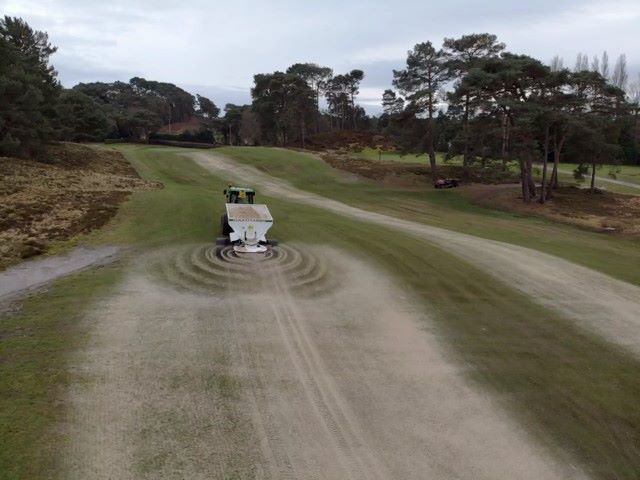
After six years, the results have been dramatic, lowering OM content from 24% to around 7%.
Deep tining with 18mm tines at 175mm depth is carried out twice during autumn and winter, while fairway overseeding takes place every November, applying a three-way fescue mix at 15g/m2, using a Charterhouse slit seeder.
On front approach and run-off areas by greens, the team has implemented a similar programme to give consistency between fairways and greens. The only difference is that on high wear areas away from greens, the greenkeepers are using an ultrafine rye seed mix to give improved resilience.
Grant continued: “Work on greens has remained much the same as before but with a few tweaks. We carry out a mix of aerifying work at varied depths using different tine sizes depending on the time of year and our OM test results.
“Our challenge is to maintain consistency and this we have achieved with OM and soil moisture content at our targeted levels. Our greens are currently Poa/bent and we are aiming to progress the surfaces to a greater bent/Poa ratio. This is being achieved by our over-seeding programme.”
The team uses a Blec Multi-seeder to create thousands of holes, applying 60% colonial bent and 40% creeping bent at 12g/m2. The Parkstone course has 1.6ha of putting surface, which requires 200kg of seed. Ten tons/ha of sand is applied afterwards and then drag matted and brushed in one operation to protect the seed. The surfaces are then double rolled to restore surface smoothness.
“The efficiency of this work is down to good teamwork and having the right equipment to do so,” said Grant.
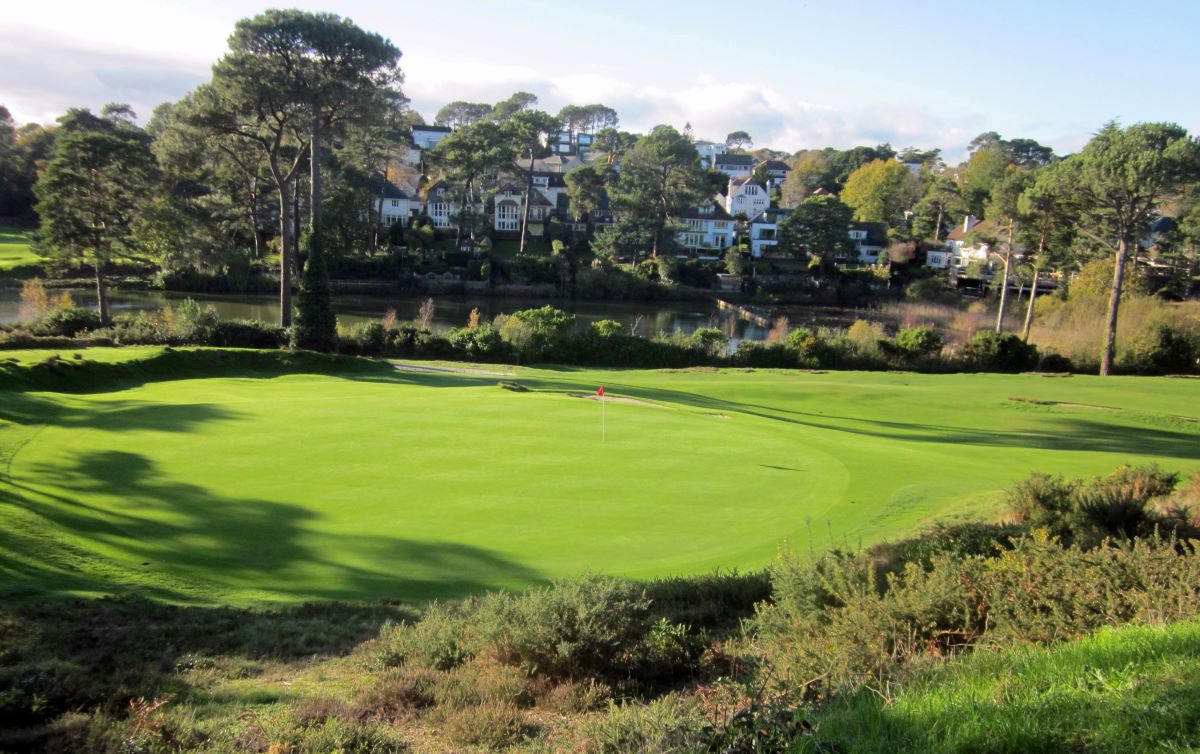
More recently the team has drained six greens using the PCD system, which is now called Hydrowick. This has been very successful and another two greens are scheduled this winter. “On tees, work is less intense but similar in nature,” Grant added. “The main difference is that we now overseed with an ultrafine rye mix to give better wear and greater disease resistance from dollar spot; this being more troublesome of late.”
Other projects of note have been the redevelopment of the 8th and 13th tee complexes and the re-modelling of the 9th green surrounds and bunker. Several worn walkways have been returfed near greens and tees and paths have been resurfaced, some with rubber-coated resin. Bunker faces have been re-turfed, some with heather included.
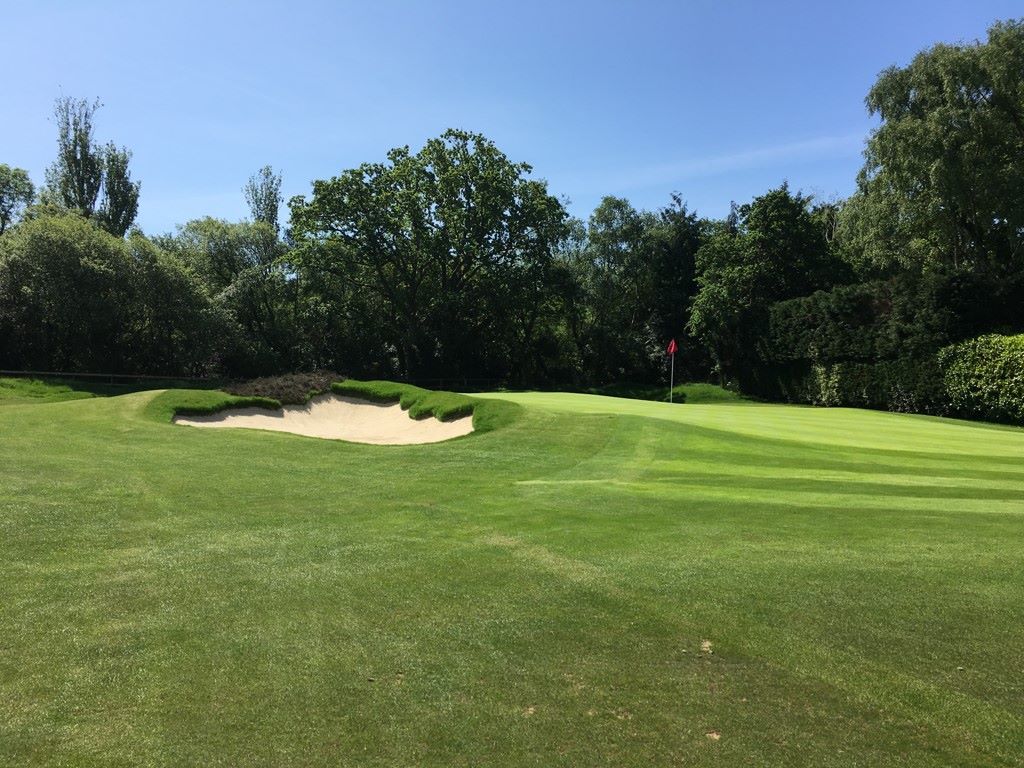
Environmental work has mainly been focused on the control of western gorse, which is cut and then sprayed manually with Blaster Pro, a woody herbicide. Heather regeneration continues where possible, along with ongoing scrub removal. This is all part of the ecological plan the team is working to.
In summary
When touring the course and listening to Grant explain the various work programmes that have been implemented, it becomes evident that this is a considerable undertaking. This level of work would not be possible without the support of the club and a dedicated greenkeeping team capable of working effectively to achieve the agreed objectives.
Much has been achieved and there is so much more that could be written, but two stories are worthy of mention.
Firstly, during the second lockdown in 2021, a few members volunteered their services to hand brush sand dressing into 18mm tine holes on every green following verti-draining. This work was a key part in improving drainage and firming up the putting surfaces. This was a great club and staff effort at a time when the course was closed for play but the team had a strong desire to maximise the opportunity.
Secondly and a year earlier, as the first lockdown was coming to an end in late spring 2020, Grant produced a video for the membership just prior to reopening for play. This took the form of walking over a small section of the course and giving a brief five-minute overview on course condition, work recently completed and what to expect. The content and course assessment of the main playing areas followed by the reassurance of transitioning the course back to normality was excellent. This was an informative account that was well received and appreciated by the members who were keen to get back on their course.
Grant has a clear vision of what can be achieved and one that is shared by the club. The recognition of the team’s effort in producing an outstanding golf course is testimony to their ability.
Parkstone is interesting, challenging, diverse and a wonderful place to play and enjoy golf. It comes as no surprise that the club’s centenary book is titled No Better Place.
Grant is on Twitter at @grnkeepergrant

Author

Laurence Pithie MG
The first turf professional to attain BIGGA’s Master Greenkeeper status in 1991, Laurence also won Greenkeeper and Groundsman of the Year in 1984 and 1988.
